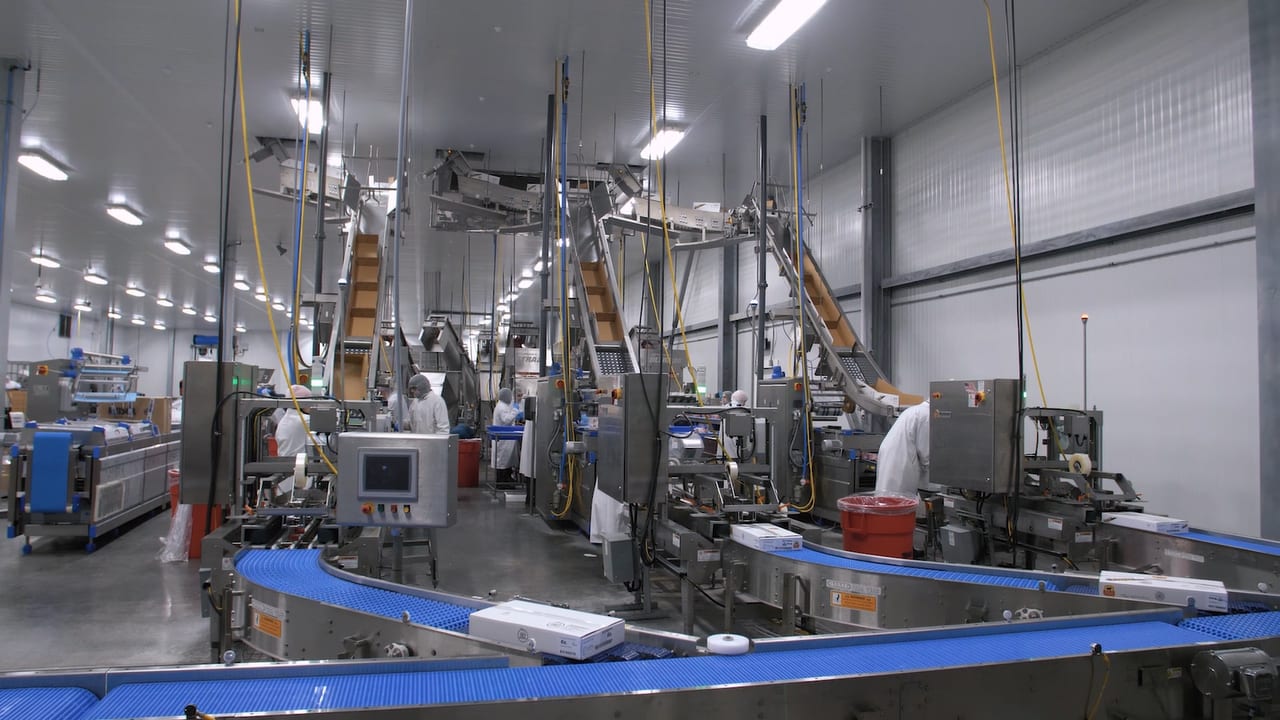
The production system receives the meat product, which has been packed into open boxes from two separate lines. Those are divided into four lanes, for a total of eight lanes of conveyors and box taping. Photos courtesy of Automated Manufacturing Technologies
When Detroit-based Wolverine Packing Co., a third-generation family owned meatpacking business experienced rapid growth in demand, they needed a high-speed automated case packing and palletizing solution for its greenfield meat processing facility in Forest Park, Mich. They turned to Applied Manufacturing Technologies (AMT), a North American independent automation engineering company, to design, build and install an automated production and material handling lines at two of its five meat processing plants in the Eastern Market area of Detroit. The projects were implemented at the company’s south plant and at its new 180,000-sq.-ft. Forest Park meat processing and freezing facility.
After consultations, they decided to adopt a flexible, modular design, which relocated existing equipment and allowed for phased installation of new equipment as well as future expansion. The two-part solution includes a production system and a pack-out system. To accommodate the facility’s startup timeline and evolving needs, equipment needed to be installed in several phases.
Production and pack-out
AMT’s solution for the production system receives the meat product, which has been packed into open boxes from two separate lines. Those two lines are each divided into four lanes, for a total of eight lanes of conveyors and box taping. The two sets of taping lanes merge and AMT’s system handshakes with the customer’s equipment for weight measurement and product x-ray. If either check fails, the box is routed to a reject lane where a quality control operator inspects it.
Wolverine Packing Co. reimagined existing equipment and installed Applied Manufacturing Technologies’ conveyors and material handling equipment to help scale up production
Meat processor automates production and pack-out systems
This high-speed product handling and pack-out system encompasses several unique features such as barcode reading and sortation.
When the taped, weighed and x-rayed boxes leave the production area, they travel via conveyor through a wall to the pack-out area. This area is equipped with a barcode reader, which reads the label and diverts the box to one of three robotic palletizing stations to fulfill a specific customer order. There, multiple boxes of the same product are picked up by a robot and loaded onto one of three pallets. With three robotic stations each having three pallets, there are a total of nine pallets concurrently being built.
One pallet dispenser feeds the nine stations via pallet conveyors. When a pallet is filled, the robot places a slip sheet on top. The pallet moves to a wrapping station where it is wrapped for stability before departing to storage. After the pallet leaves the pack-out area, the pallet dispenser and conveyor automatically direct another pallet to that station.

The pack-out area has a barcode reader, which reads the label and diverts the box to one of three robotic palletizing stations to fulfill a specific customer order.
